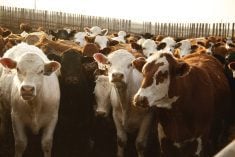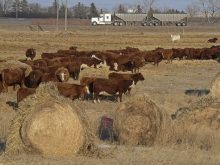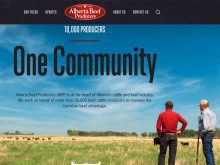North of the border, the federal government subsidizes producers to plant cover crops and practise rotational grazing
In 2021, the federal government unveiled the $200-million On-Farm Climate Action Fund in an effort to make farming more sustainable.
Agriculture Canada has said the fund is designed to support farmers in adopting beneficial management practices that store carbon and reduce greenhouse gases.
Farming and environmental groups across Canada are encouraging farmers to use the funds to seed cover crops, improve nitrogen management and try rotational grazing.
South of the border, the U.S. Department of Agriculture is also encouraging farmers to try cover crops, which reduce soil erosion and keep a living root in the soil for as many months as possible.
Read Also

Canada’s slaughter horse industry lacks transparency
The lack of clear reporting and public access to data keeps the industry largely hidden, leaving questions about humane treatment and traceability unanswered.
In addition to its cover crop incentives, the USDA runs the Grassland Conservation Reserve Program, which allows farmers to use the grasslands for pasture and hay production and landowners are paid for the environmental services of the grasslands.
“The strength of this program lies in its many benefits — through annual rental payments, the program helps producers and landowners produce and maintain diverse wildlife habitat, sequester carbon in the soil, and support sound, sustainable grazing,” said Zach Ducheneaux, administrator of USDA’s Farm Service Agency, in a news release. “These benefits help keep agricultural lands in production while delivering lasting climate outcomes.”
The “lands in production” line is a critical part of the Grassland program.
The USDA supports using grasslands for livestock production because that approach preserves grasslands.
In Canada, however, grassland and pastureland are disappearing from parts of the Prairies.
Since about 2007, hundreds of thousands of acres of land traditionally used for livestock have been plowed under and converted to cropland in Western Canada.
Farmers are buying marginal land and switching it to crop production to take advantage of strong prices for canola, wheat and other commodities.
That practice is a problem, say leaders in Canada’s livestock sector. Once that pastureland becomes cropland, it will likely remain as cropland for decades. The habitat for wildlife, the carbon sequestration and other environmental wins from grasslands and pastureland could be permanently lost.
“In a country where we have fragile lands and we have great grain-growing lands, the fragile land has to be looked after, in the way of ecological goods and services,” said Martin Unrau, former president of the Canadian Cattle Association, who farms near MacGregor, Man.
Last year, the USDA signed up 3.1 million acres for the Grassland Conservation Reserve Program — the highest ever for the program.
“The current total participation in Grassland CRP is 6.3 million acres, which is part of the 23 million acres enrolled in CRP opportunities overall,” the USDA said in an April release.
The top users of the grasslands program are states in the Great Plains, including Colorado, South Dakota and Nebraska.
The Alternative Land Use Services (ALUS) program in Canada also pays landowners to preserve wetlands, pollinator habitat and grasslands.
But it is a charitable organization. Compared to the USDA CRP, it is tiny.
In 2022, about 46,000 acres were enrolled in ALUS programs across Canada.


















